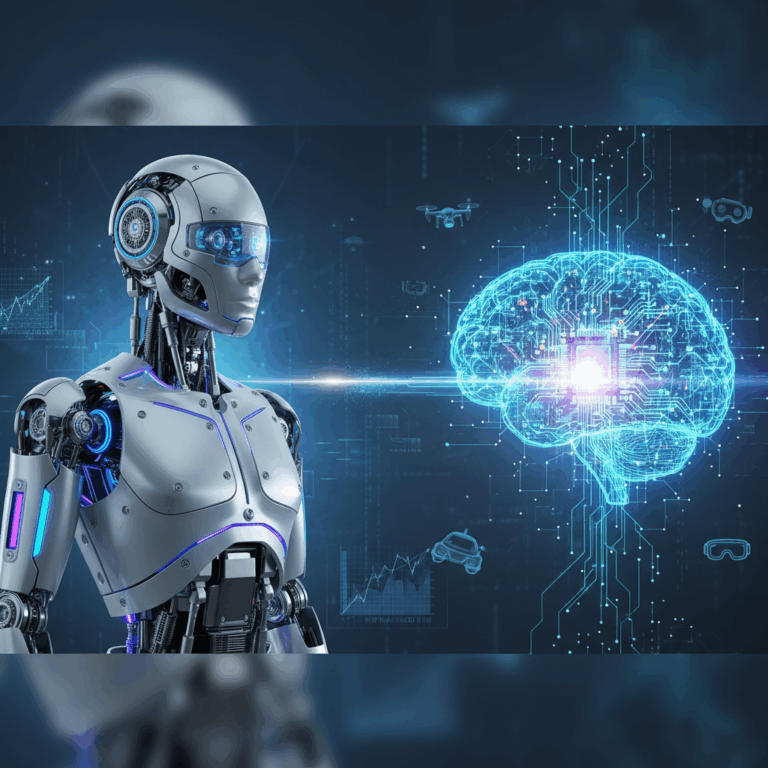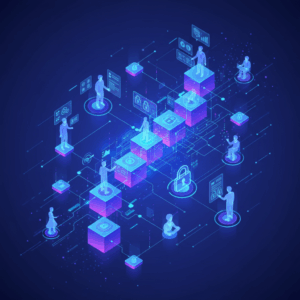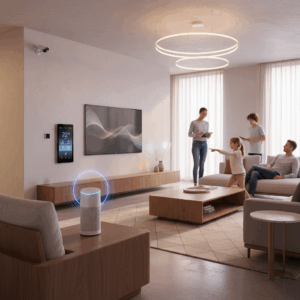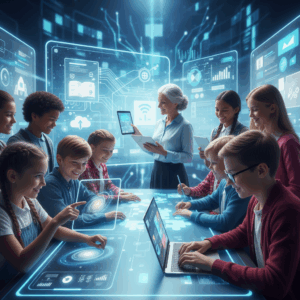Fundamentals of Robotics
Robotics is the engineering discipline focused on the design and creation of physical machines called robots. These devices perform tasks that often require precision and efficiency in real-world settings.
Robots are equipped with sensors and actuators that enable them to interact effectively with their surroundings. Their applications span various industries including manufacturing, healthcare, and logistics.
Definition and Purpose of Robots
Robots are programmable machines built to execute specific tasks autonomously or under human control. Their primary purpose is to enhance productivity by performing repetitive, dangerous, or complex actions.
They serve to improve operational accuracy and speed while reducing human error. This makes them essential in environments where precision and reliability are critical.
Overall, robots extend human capabilities by handling tasks that are tedious, hazardous, or beyond human physical limits, increasing safety and efficiency in many sectors.
Physical Interaction with the Environment
Robots sense the physical world through various sensors that capture data about their environment, such as vision, touch, and proximity sensors. These inputs guide their actions.
Using actuators like motors or hydraulic systems, robots can manipulate objects, move within spaces, and adapt to changing conditions. This interaction defines their real-world functionality.
Robots’ ability to physically interact allows them to perform diverse tasks, from assembling products in factories to assisting patients in healthcare settings.
Principles of Artificial Intelligence
Artificial Intelligence (AI) is a branch of computer science focused on creating systems that can perform tasks typically requiring human intelligence. It operates through software and algorithms in digital environments.
AI systems learn from data, recognize patterns, and make decisions autonomously. Unlike robots, AI lacks physical form but provides cognitive capabilities that enhance technology’s adaptability and efficiency.
Nature of AI as Digital Technology
AI is fundamentally a digital technology that processes information rather than interacting physically with the world. It relies on data inputs and computing power to simulate intelligent behavior.
Through sophisticated algorithms, AI enables machines to reason, learn, and solve problems without explicit programming for every task. This flexibility is a key feature that distinguishes AI systems.
AI operates within software platforms, cloud services, and embedded devices, enabling wide-ranging applications from data analysis to autonomous decision-making.
Capabilities of AI Systems
AI systems excel in areas such as pattern recognition, natural language processing, and predictive analytics, enabling them to perform complex cognitive tasks.
They can analyze vast datasets quickly, learn from experience, and improve their performance over time. These capabilities allow AI to automate tasks like image analysis, speech recognition, and decision support.
Moreover, AI can adapt to new information and environments, making it suitable for dynamic and uncertain scenarios across various industries.
Examples of AI Applications
Common AI applications include virtual assistants like Siri and Alexa, recommendation systems in e-commerce, and fraud detection in finance.
In healthcare, AI analyzes medical images for early diagnosis, while in transportation, it supports autonomous vehicle navigation and traffic management.
These examples demonstrate AI’s versatility and significant impact across different sectors, transforming how businesses and consumers interact with technology.
Distinctions and Synergies Between Robots and AI
Robots and AI serve distinct roles in technology. Robots are physical machines that interact with the environment, while AI provides the intelligence behind decision-making processes in digital form.
Understanding their differences and how they complement each other is key to grasping the future of intelligent systems that combine physical actions with cognitive functions.
Key Differences in Function and Form
Robots are tangible devices designed to perform tasks in the physical world using sensors and actuators. Their form is mechanical and functional, oriented toward physical interaction.
AI, conversely, is intangible software focused on processing data and making decisions. It lacks a physical body, operating through algorithms to simulate intelligent behavior.
This fundamental contrast means robots handle material tasks, while AI manages cognitive processes like learning and reasoning without physical interaction.
Integration of AI in Robotics
Combining AI with robotics creates intelligent machines capable of perceiving, learning, and autonomously making decisions in dynamic environments.
AI integration enhances robots’ adaptability, enabling them to perform complex tasks, such as navigating unpredictable spaces or responding to human needs more effectively.
This synergy expands robots’ applications beyond fixed programming, leading to smarter automation in industries like healthcare, logistics, and service robotics.
Interesting Insight on AI-Robot Collaboration
Intelligent robots equipped with AI can continuously improve through experience, adjusting their actions based on new data without human intervention.
This ability to learn and adapt distinguishes integrated systems from traditional robots, paving the way for advances such as autonomous vehicles and personal assistants.
Future Trends and Challenges
The future of robotics and AI promises significant advancements driven by the growing integration of intelligent algorithms and physical devices. Enhanced autonomy and adaptability are key trends.
Applications will reach new domains including homes, hospitals, and public spaces, where robots and AI systems will collaborate to improve daily life, healthcare, and transportation efficiency.
Advancements and Expanding Applications
Emerging technologies in AI, such as machine learning and computer vision, are enabling robots to perform more complex and varied tasks with greater autonomy.
This progress is expanding applications beyond industrial uses to include autonomous vehicles, robotic assistants, and AI-powered automation in service sectors.
Such advancements will transform industries by improving productivity, safety, and accessibility to technology, creating smarter environments and user experiences.
Ethical, Safety, and Societal Considerations
As robotics and AI become more prevalent, addressing ethical issues like privacy, bias, and decision accountability is crucial to ensure trustworthy systems.
Safety challenges must be managed by designing reliable robots that interact responsibly with humans, avoiding accidents and unintended consequences.
There are also societal impacts to consider, including job displacement and changes in workforce dynamics, requiring strategies for education and economic adaptation.






